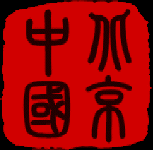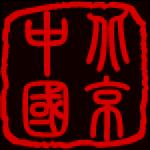 | Chinese Culture Three Bases of the Arts |  |
 | Chinese Culture Three Bases of the Arts |  |
Note : this section will be expanded over the coming months.
The Three Bases of the ArtsThese are calligraphy, poerty and music. Chinese CalligraphyCalligraphy is a highly regarded art in China. It is much more than stylised writing in the western sense of calligraphy and is more akin to painting. Non-depictional and just black and white, line and space, chinese caligraphy is startilingly beautiful in its simplicity yet enables a very wide range of expression and takes many years to master. Even a westerner with no experience can sense the beauty of a good example, with its innate sense of balance. And the practice of it requires a harmony of self, brush and paper. Good calligraphy is said to embody the natural forms and movents of the natural world. A popular type of calligraphy involves writing poetry in water outdoors using a large brush on the pavement. Chinese MusicChimes, bells drums and flutes (which could be made quite simply from bamboo), date back into antiquity. Later, by the time of the Tang dynasty (618 - 907) stringed instruments, such as the lute (or 'pipa') and zither, which are plucked, and the Erhu, with its vertically held strings, and Mongolian Horse-Headed Fiddle, which use a bow, were developed. By the Tang dynasty, music - and dance - was widely enjoyed by all people and could be experienced at fairs organised by various temples. Folk songs telling the everyday tales of fishermen, herders and farmers were hugely popular among the peasants. Influences from Buddhism and Islam added further flavour to the repertoire of Chinese music. An interesting variant on the flute is made of clay and is a rounded pot with a number of holes and a spout to blow into. It resembes a small teapot and produces a beautiful sound. Chinese PoetryThe 'Book of Songs' (Shi Jing) was the first major collection of Chinese poetry, comprising both aristocratic poems and rustic poetry, probably derived from folksongs. It comprises 305 poems, some possibly written as early as 1000 BC. The work is one of the 'Five Classics' (Wu Jing), canonized by the Han Dynasty. The poems are said to have ben selected and edited by Confucius from a total corpus of about three-thousand poems. Chinese poetry has been influenced by the spiritual traditions of Buddhism and Taoism. The subject is often everyday life, a moment in time, appreciation of nature and a pointing to the underlying unity of life. One of China's most venerated poets is Li Po (AD 701-762) who is also known as Li Bai. Here is an example of his poetry.
|
Share this page
|
China Travel and Culture Videos Home